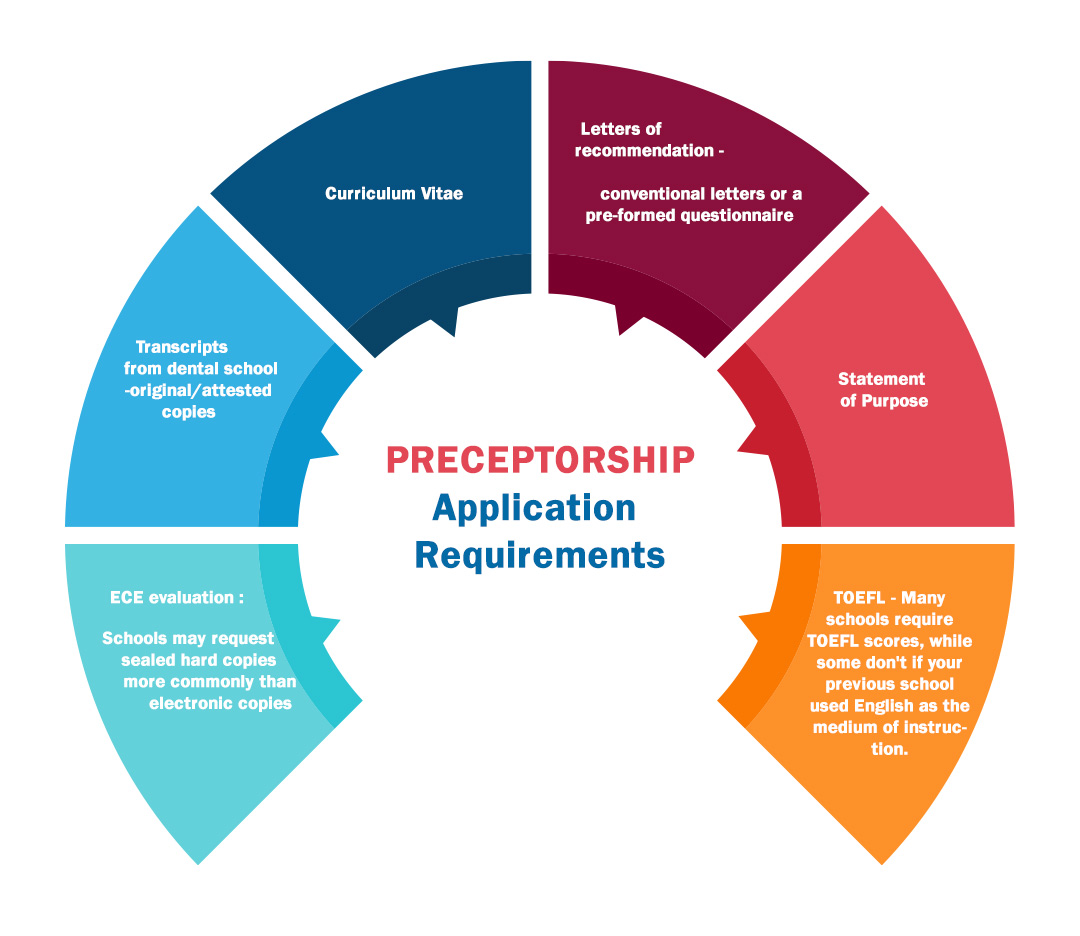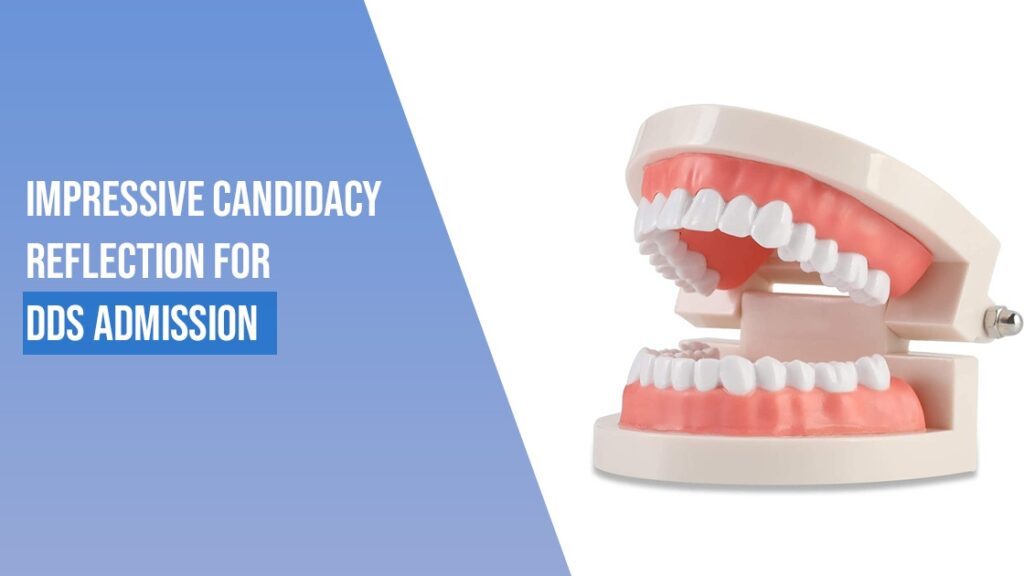Introduction:
As international dentists embark on a journey to enhance their careers and acclimate to the dynamic landscape of American dentistry, the path forward offers a blend of excitement and challenge. Within the United States, universities open doors to dental preceptorship programs that serve as vital stepping stones for these individuals. These programs are not merely educational experiences but transformative bridges that connect international dentists to the intricate world of American dental practice. They provide hands-on training, exposure to diverse clinical scenarios, and an in-depth understanding of the protocols, procedures, and regulations that govern dentistry in the USA. In this blog, we will embark on a journey through the realm of dental preceptorships in the United States, exploring their multifaceted benefits and significance. This journey will shed light on the invaluable insights and opportunities these programs offer to international dentists looking to thrive and excel in their new healthcare environment.
Choosing the right preceptorship
School of choice
Choosing a school for the preceptorship can be based on the alignment of your values with their mission and the school in which you wish to pursue DDS/ Residency. Pursuing a preceptorship in your dream dental school will facilitate interaction with current students and faculty. You will gain insight into student life and culture here.
Specialty
Dental schools offering preceptorships may restrict themselves to a single program (for eg. UIC offers one preceptorship program in Orthodontics) or provide multiple specialties to choose from. These specialties encompass most of them recognized by the ADA. In addition, some schools offer preceptorships in niche areas such as Hospital Dentistry and Oral Biology (UCLA).
Duration
Preceptorships can vary in duration from a month to two years. This duration may be fixed or flexible. For eg. Boston University’s General Dentistry Preceptorship spans a period of one month and cannot be extended further. However, the likes of UCSF and UCLA offer customizable programs that can be extended on a quarterly basis i.e. minimum duration of their program is 3 months and this can be extended up to 12 months (one quarter to four quarters).
Duration reflects directly on the cost of the program and the ability to build long-term professional relationships. The latter can be a boon especially if you want one of the faculty members to recommend you for prospective programs in the future
Curriculum
A preceptorship program essentially entails one or more of the following components:
1. Didactics/ lectures
Preceptors are allowed to audit classes with dental students and residents. Based on the preceptorship of choice, this may be limited to a particular field of dentistry or encompass all possible specialties
2. Shadowing/ Assisting
– Preceptors are introduced to clinical settings within educational institutions where they can observe faculty and students render care to patients. This is a great opportunity to grasp the concepts of patient charting and remain abreast of communication techniques and state-of-the-art dental materials. Furthermore, some schools such as UCLA allow preceptors to assist the operator, thereby, creating an avenue for hands-on exposure.
3. Community-based events
Preceptors are often presented with an invaluable opportunity to partake in events organized by the school and its student clubs. They can range from community education, screening and treatment camps to networking events and ‘Lunch and Learn.’ While these events aren’t mandatory requisites in most preceptorship programs, seeking such opportunities amplifies one’s knowledge and professional circle.
4. Continuing Education
This is another optional component that one would want to exploit to improve hands-on skills and network. School-based CE events are reputed for their accessibility and relative affordability.
5. Research
The duration of the preceptorship program generally dictates one’s ability to actively engage in scientific research. Various schools boast state of the art research facilities which encourage preceptors to try their hand in dental research. While a chance to work on an independent, funded project is not guaranteed, it is possible to begin by volunteering as a research assistant and penning review articles. Some schools such as UCLA, UCSF, Rutgers and UIC are great target schools if this component of the program interests you the most. Moreover, if you are looking for research-intense preceptorship programs, UCLA’s Preceptorship in Oral Biology is a go-to.
Cost
The cost of a preceptorship program is highly variable and is dependent on the duration of the program and the school offering the same. For example, Boston University’s one month International General Dentistry Preceptorship program costs $3600 while UCLA’s General Dentistry Preceptorship Program costs $6100 a quarter. In addition to the cost inherent to the program, you would want to consider expenses associated with accommodation, transport, groceries, utilities, and phone service.
Visa status
Most preceptorship programs require a J-1 or F-1 visa. Once accepted, candidates will be provided the required documentation from the university to kickstart the visa application process. One of the exceptions to this norm is Boston University where anyone is allowed to apply provided they hold a US visa. This implies that any US visa holder can apply irrespective of the visa category. However, the school does not aid in the visa application process. Therefore, one must be a visa holder while applying to the program.

Application requirements
Application requirements vary from school to school and occasionally from program to program within a school. Given below is a comprehensive list encompassing the most common requisites in addition to the school specific application form.
- ECE evaluation (Schools may request sealed hard copies more commonly than electronic copies)
- Transcripts from dental school (original/attested copies)
- Curriculum Vitae
- Letters of recommendation (Schools may request conventional letters or require evaluators to grade and comment on your skills through a pre-formed questionnaire)
- Statement of Purpose (This has to be customized for every school and program)
- TOEFL
- Most schools require applicants to submit their TOEFL scores while a few do not require any proof of English proficiency provided the medium of instruction at your alma mater was English.
- The schools requiring TOEFL have minimal requirements which are to be fulfilled by prospective applicants.
Kindly note that the aforementioned list is not representative of any school’s requirements ditto but rather a compilation of the most common requirements.

Adithi’s Personal Experience
Here’s what you can do during your first week to leverage what every school has to offer during the preceptorship
- Get to know your Program Director well
- Network with current students (Advanced Standing and traditional DMD/DDS) and remain abreast of extracurricular activities that the school has to offer
- Once you receive your schedule, check whether you can audit additional courses of interest in addition to those mentioned on the schedule
- On your first day in the student clinic, acquaint yourself with the materials in the inventory with the aid of a faculty member.
- Get to know the student clubs present at the university and attain temporary membership in one if permitted. This will enable you to actively contribute to school related activities and engage better with the culturally diverse student communities.
- Look into the faculty directory and identify faculty who are working on research projects that you are interested in. You can formally request them to provide you an opportunity to assist them with the project. A few schools may permit you to work on independent projects.
- Gain insight into various school-based scientific events such as Research Day for the given calendar year. This will enable you to enroll in advance and prepare for them proactively.
- Service learning has given rise to various dental school-based community events where you can volunteer. While they may not be a primary component of your curriculum, you can request your Program Director to make an exception if applicable. These events can range from Mobile dental services, Give Kids A Smile, Special Olympics to Global Days of Service. The latter is offered at BU where dental students can partner with non-profit organizations to address food and clothing insecurity.
List of Preceptorship Programs
Conclusion
In conclusion, dental preceptorships within American universities offer an invaluable pathway for international dentists seeking to advance their knowledge and clinical skills in the field. These programs not only bridge the gap between their prior education and the rigorous standards of dental practice in the United States but also provide a transformative learning experience. By collaborating closely with experienced dental professionals in diverse academic settings, international dentists can gain the confidence, expertise, and cultural competence necessary to excel in their careers in a new healthcare environment. As the dental profession continues to evolve, these preceptorships serve as a vital link to ensure international dentists are well-prepared to deliver high-quality care while adapting to the unique demands of American dentistry. For those with aspirations of practicing dentistry in the USA, exploring the opportunities offered by dental preceptorships at universities is an essential step toward a successful and fulfilling career in this critical healthcare field.
Also Read:


